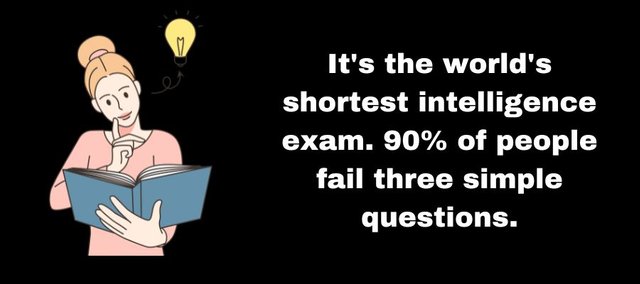
If you enjoy taking quizzes, we have the ideal one for you.
It's the world's smallest IQ test, with only three questions - yet only about one in every five people get it right. While there are several and time-consuming methods for testing your intellect, one of the most prevalent is to take an IQ test.
Some include a lot of questions to truly put your intellect to the test. This bus only has three lanes, and while it appears easy enough, only about 17% of passengers use it.
It's the quickest exam available and may appear to be a piece of cake, but don't be fooled. The Cognitive Reflection Test (CRT) was developed by Professor Shane Frederick and published in a research article in 2005, according to The Mirror.
"The three items on the CRT are 'easy' in the sense that their solution is easily understood when explained, yet reaching the correct answer often requires the suppression of an erroneous answer that springs 'impulsively' to mind," Professor Frederick remarked of the exam.
It has recently reappeared online, and many people are trying it. Can you pass it if 83% of people failed?
The following are the questions:
A bat and a ball both cost $1.10. The bat is $1 more expensive than the ball. What is the price of the ball?
If five machines take five minutes to produce five widgets, how long would it take 100 machines to produce 100 widgets?
There is a clump of lily pads in a lake. The patch doubles in size every day. How long would it take for the patch to cover half of the lake if it takes 48 days to cover the entire lake?
The most often offered incorrect answers:
10 cents
100 minutes
24 days
"Anyone who thinks about it for even a moment would recognize that the difference between $1 and 10 cents is only 90 cents, not $1 as the problem stipulates," Professor Frederick says.
"In this case, catching that error is equivalent to solving the problem, because nearly everyone who does not respond '10 cents' in fact responds correctly."
The right responses are:
5 cents
5 minutes.
47 days
Confused? On his blog, Mind Your Decisions, Presh Talwalkar, author of The Hoy of Game Theory: An Introduction to Strategic Thinking, revealed how to figure out the proper answers.
- Assume the ball costs X dollars. The bat then costs $1 extra, thus X + 1. So bat + ball = X + (X + 1) = 1.1 since they cost $1.10 when purchased together. This indicates that 2X + 1 = 1.1, 2X = 0.1, and X = 0.05. This indicates that the ball is 5 cents and the bat is $1.05